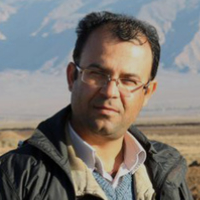An Archaoezoological Account on the Role of Herding in the Subsistence Economy of the Mediaeval town of Esfarayen (Shahr-e Belqays) in Khorasan-Iran
The Old city of Esfarayen is located in the north east of Iran and the south west of the modern city of Esfarayen. In the Qajar period, this city was cited as the "city of Belghays". According to archaeological evidence and written sources, Esfarayen was influenced by economic and culture of Nishapur and deemed as one of the major centres for the production of domestic herbivores (sheep, goat and cattle) that provided Nishapur with animal products. This paper attempts to gain a better understanding of subsistence economy of Esfarayen by evaluating the faunal remains of this city and studying written sources focusing on the Islamic period. The paper also aims to identify the exploited animals in Esfarayen and the role of livestock and stockbreeding in such aspects of the local society as diet, farming, trade, and transportation. As regards few Archaeozoological astudies have been done on animal remains, especially, in Islamic period.Due to the importance of agriculture and animal husbandry in Esfarayen, the faunal remains of two seasons of excavation (1389/2010-1391/2012)were studied in the Archaeometery Laboratory of the University of Tehran. The assemblage belonged to the first centuries of the Islamic period (S1), Samanid-Qaznavid (DJ121,DK121), Seljukid-Ilkhanid (BW-BX116), and Timurid period (H1-H5). Nearly 1005 pieces of animal bones were found in these excavations, and this article presents the results of archaeozoological studies on the collection. The bulk of the animal bones was recovered in the S1 trench. The vast majority of the animal remains, in all periods, belonged to caprines (sheep/goat) followed by the cattle. The other identified animals in Shahr e Belqeys were identified, such as horse, donkey and dromedary. Wild taxa including gazelle, red deer and carnivores. The presence of various traces related to human modification (cut marks and burning) shows that all these animals had a role in different areas of the economy of this town.
- حق عضویت دریافتی صرف حمایت از نشریات عضو و نگهداری، تکمیل و توسعه مگیران میشود.
- پرداخت حق اشتراک و دانلود مقالات اجازه بازنشر آن در سایر رسانههای چاپی و دیجیتال را به کاربر نمیدهد.



